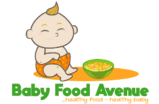This post may contain affiliate links, which means that I may earn a commission if you make a purchase using these links at no extra cost to you.
Does your baby want to sit up while drinking from a bottle? Babies can be bundles of dramas, at times. You will want to feed them with a bottle, and there they are trying to sit up. And to think that they could scream when you try to lean them back is so disturbing. This makes bottle-feeding your baby quite a hard task to do.
But do not beat yourself, if your baby wants to sit up while drinking from a bottle. You are in no way alone, okay? Many babies do this, too. So, it is normal if you find that your baby does the same.
When babies want to sit up while drinking from a bottle, they are only trying to try out a new skill they have learned, and are curious about the surrounding world. While you should enjoy the fun, what you can do in the meantime is put a pillow behind her. That way, she is safeguarded from falling and hitting her head on the floor.
Can Baby Drink Bottle Sitting Up?
Bottle feeding your baby while they sit up is called upright feeding. Babies can be very well bottle-fed while sitting up. It is just that this posture is most ideal for older babies, who have developed a little more control over their bodies. If your baby belongs to this category, you can seat them up on your lap and allow their body to rest inside your arm, or against your chest.
Bottle-Feeding Postures and Techniques
Are you using a bottle as a supplement to breastfeeding or solely? There are certain feeding positions and techniques we think you should learn if you desire a better and healthier bottle-feeding experience. In this section of the article, we have analyzed different bottle-feeding techniques and positions that you could adopt. Brace up, and enjoy!
Bottle-Feeding Techniques
Upright Feeding
Upright feeding is the mode of feeding that happens when your baby is sitting upright. Like we have earlier pointed out, it is most ideal for older babies, who have better control of their bodies.
This type of feeding is especially beneficial for babies who have issues with acid reflux or gas, and the beauty is that it can be performed literally anywhere. The one downside to this is that your baby will not be facing you, and this makes bonding and cue-reading some sort of big deal.
Cradle Hold Feeding
Here is one of the more traditional bottle-feeding positions. In this type of feeding, your baby’s head is placed in the crook of your arm, and your hand is wrapped around his bum. What you will then do after this is, lift your elbow so that your baby is at a slight angle, with their head raised above their body.
The pro that comes with this feeding is that it prevents ear infections, and makes facial feeding cues easier to spot. Added to these facts is that it can be done in public. Your arms can get tired in a matter of 10-20 minutes, though, and that’s the only con.
Lap Feeding
Lap feeding requires that you are either lying down throughout or sitting down with your legs up and your knees, bent. Your baby is placed with its back pressed against your thighs, facing you. Your baby’s head is against your knees, and her feet on your stomach. The advantage of this type of feeding is that it comes with lots of bonding opportunities, and takes the stress from your feeding arms.
The seeming downside is that it is difficult to perform in public. So, you might need to always be at home to do it.
Angled Feeding
Angled feeding is pretty much like the cradle hold, except that you are not going to be using your arms to aid your baby’s weight. In place of using your arms, you use an angled feeding pillow. This angled feeding pillow keeps your baby snug in place against your body. The best time to go for this type of feeding is when your baby going through a cluster feeding frenzy – something that happens to both breastfed and bottle-fed babies alike.
Cue-Based Feeding
Cue-based feeding is a growing technique coming from hospitals and NICUs, predominantly for babies who are born before term or with some other feeding difficulties. Cue-based feeding can feature providing a better-controlled flow rate to help the airways of preterm babies, using an elevated sideway position coupled with swaddling, pacing the feeding, providing controlled support to keep the baby in an even-keel state, and preventing the movement of the nipple in the baby’s mouth.
For nurses and caregivers, the end goal of this mode of feeding is transitioning preterm and other high-risk babies to a position of full oral feeding. The state where babies do not need to rely on feeding tubes to eat but can feed perfectly from breast or bottle is what is called full oral feeding.
This type of feeding is not limited to preterm babies, but can also work for healthy and fully developed babies. Cue-based feeding as the name implies is looking out for cues in your baby: cues of hunger, cues of feeding difficulties, and cues of satisfaction. Practically, it is a kind of feeding predicated on signals from your little one.
Paced Feeding
This mimics breastfeeding. It offers your baby control of the process and helps them know when they are full. This technique promises to help the baby eat more slowly and go all out for the milk. Here is how paced feeding works: your baby sits more upright and you tickle her lips with the bottle. Immediately your baby makes rooting cues, put the nipple in her mouth, and slant the bottle horizontally. With paced feeding technique, you are able to switch sides the way you would in breastfeeding.
Bottom Line
Does your baby want to sit up while drinking from a bottle? Above are different bottle-feeding techniques and positions you can adopt in order to improve your baby’s feeding experiences. Be sure to read and pick one that you think will not work only for your baby, but also for yourself.

